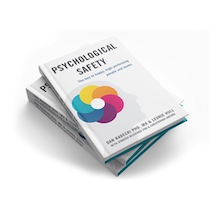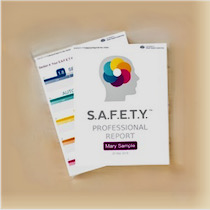Trainers tend to project absolute confidence in their training methods, their ability to deliver, and the learning outcomes for their clients. However, internally many of us experience an unease that constantly keeps us wondering if we could be doing something better. Making it worse, each month there are so many new products pushed into the market touting the latest fad to help learners. In fact, nearly $2 billion was invested in education technology in 2014, and there are thousands of startups in the space.
All these resources invested in new education tools leaves trainers less and less able to find the diamonds in the rough; there is not enough time to evaluate all the products coming out. What’s more, this leaves training professionals struggling to keep up and, for some, feeling insecure about their own capabilities and future relevance.
Trainers want to know they are doing the best job for their clients and students. They want to have confidence they are not missing anything. And more importantly, trainers want to know their programs and abilities are going to be relevant in the future. This means being able to avoid the get-rich-quick fads, which may generate money in the short term, but negatively affect reputation in the long term. So, how do trainers sort through all the clutter to get to the good stuff?
Thankfully, there is a body of knowledge that can act as a guide. The structure of the human brain has been mostly unchanged for millennia. Though our average IQs drift upward each generation, fundamentals of human learning have not changed. The aspects and limitations of being human have remained the same. Things like social pressure have an impact on classroom learning (both for the good and for the bad). Humans have a reasonably fixed learning speed, though we have a lot of individual variation. Emotions and motivation are critical in the learning process. We all have limited attention spans, and distractions are still distractions. Using the findings from neuroscience, social psychology, evolutionary psychology, and interpersonal neurobiology, we can make it easier to evaluate new learning tools and methodologies.
Even training that seems very technical, like learning a new computer program language, will be absorbed and retained to a higher degree if the learner is emotionally involved. This is why it is often so easy to remember swear words while learning a new language, while for getting practically everything else. Emotions and emotional engagement are critical to the learning process.
Many trainers and employers intuitively know this, but still make basic mistakes either from their delivery or in the way they seek to measure their effectiveness.
Some trainers, for example, measure emotional engagement from participants with a simple self-report survey at the end of the session which asks learners if they enjoyed the training.
Instead, science gives us insights into how humans work so we can avoid training pitfalls while creating new and innovative ways to help people develop to their full potential. This paper is divided into two parts. The first part introduces fundamental elements of important factors in human learning from a neural perspective. This includes a deeper understanding of motivation, self-regulation, memory, heuristics, decision making, repetition, feedback, and our social nature.
With a basic framework in place, the second part of this paper offers an analysis of different training methods and tools which can be used to generate a science-based paradigm to improve training program design and delivery.
Sign up to access full white paper:
Authors

Christopher Ancona
Technology & Data Analyst, ABL

Dr Dan Radecki
Co-founder & Chief Scientific Officer, ABL











